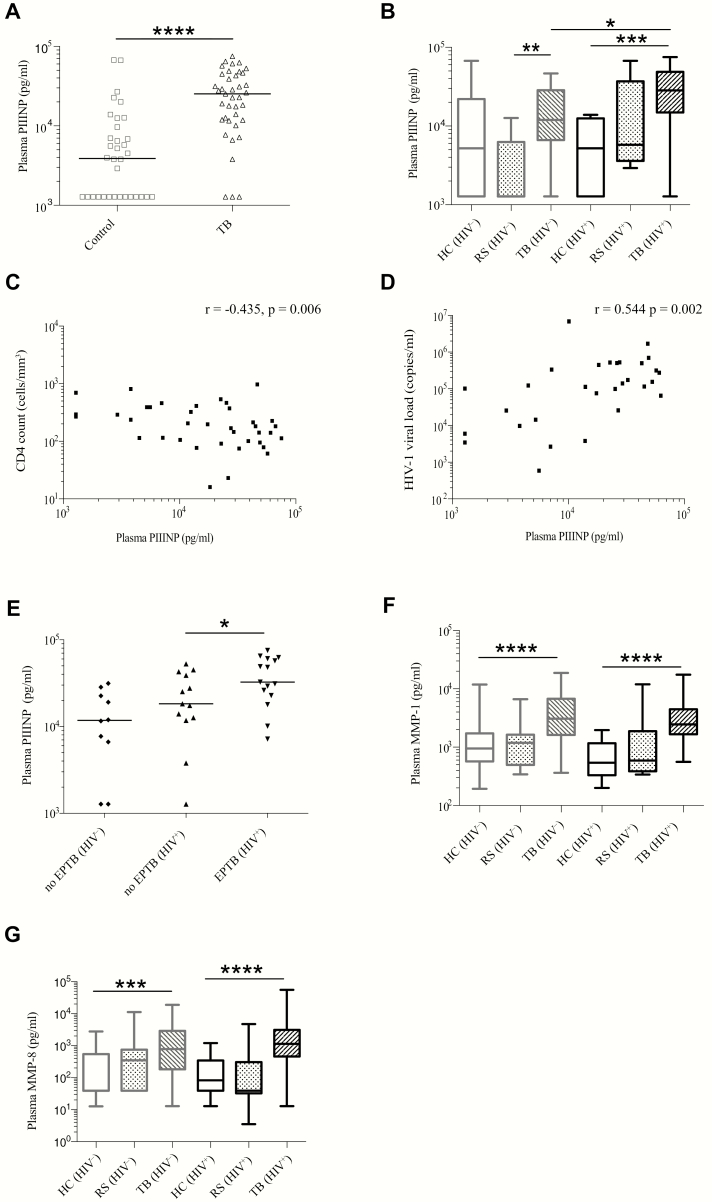Figure 2.
Tuberculosis (TB) increases systemic extracellular matrix turnover, which is further augmented by human immunodeficiency virus (HIV) coinfection. Plasma procollagen III N-terminal propeptide (PIIINP) concentration was elevated in TB patients compared to respiratory symptomatic (RS) and healthy controls (HC) (A). TB (HIV+) and TB (HIV−) patients had higher plasma PIIINP concentrations than corresponding controls (B). In contrast to sputum matrix metalloproteinases (MMPs), plasma PIIINP was further elevated in TB (HIV+) compared with TB (HIV−). In HIV+ patients, plasma PIIINP concentration and peripheral blood CD4 cell count negatively correlated (C), whereas HIV-1 viral load positively correlated with PIIINP concentration (D). Plasma PIIINP was elevated in patients with extrapulmonary TB (EPTB) compared to those without EPTB (E). Plasma MMP-1 (F) and plasma MMP-8 (G) were elevated in TB (HIV−) and TB (HIV+) compared to respective RS and HC, and did not differ by HIV serostatus in TB patients. Boxes represent the first and third quartiles and horizontal bars within indicate median values; whiskers indicate minimum and maximum values. Horizontal bars between the datasets indicate Mann-Whitney U test comparisons. *P < .05, **P < .01, ***P < .001, ****P < .0001. Correlations were performed using Spearman rank-order correlation coefficient.

